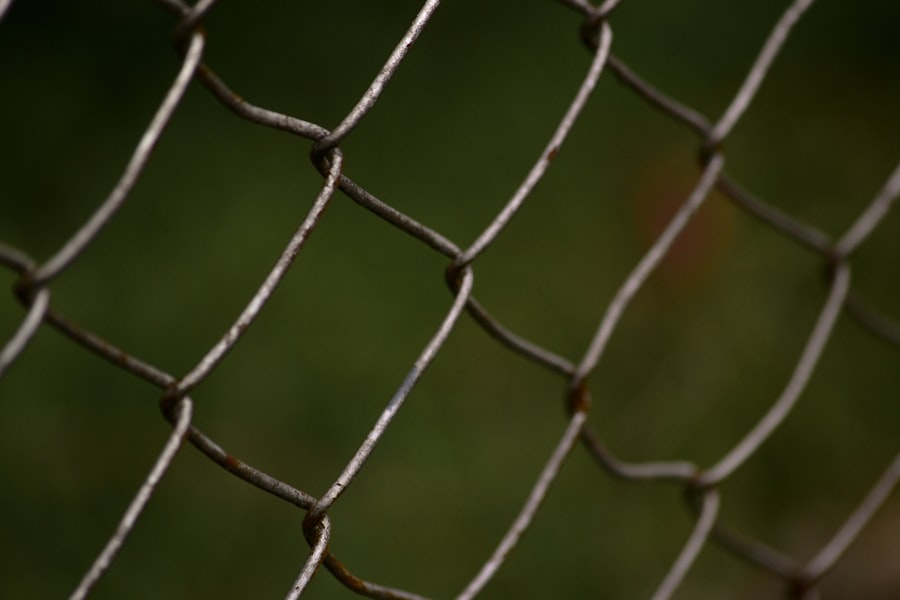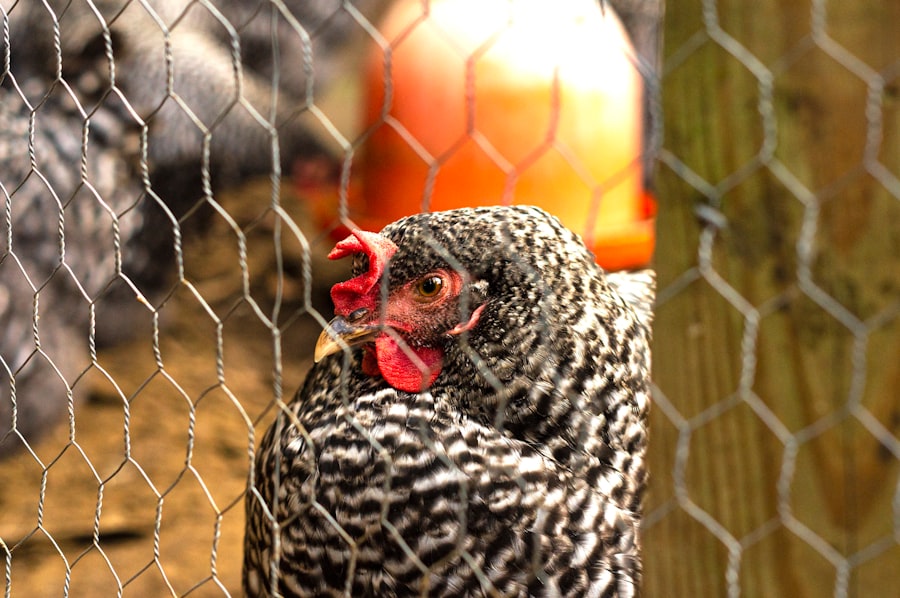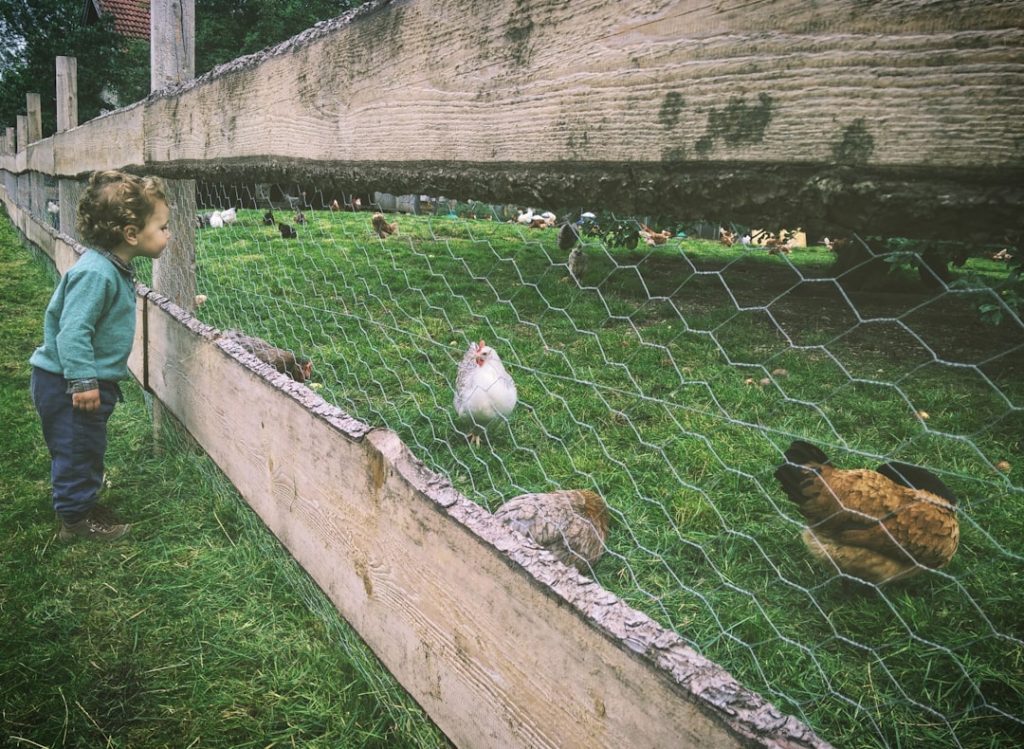Chickens are social and inquisitive animals that exhibit complex behaviors. They possess a strong foraging instinct, which drives them to explore their environment in search of food. This natural tendency can lead chickens to enter areas where they are not intended to be.
Chickens have specific behavioral traits that can be utilized in managing their movements. For instance, they are attracted to shiny objects and may be deterred by sudden loud noises. Understanding these characteristics allows for more effective strategies in controlling their access to certain areas.
Within a flock, chickens establish a hierarchical structure known as the pecking order. Dominant birds often lead exploratory behavior, with subordinate birds following their lead. This social dynamic influences the movement patterns of the entire flock.
Recognizing and comprehending these behavioral aspects of chickens is crucial for developing effective methods to restrict their access to undesired areas. By applying this knowledge, caretakers can implement proactive measures to guide chicken behavior and maintain appropriate boundaries for the flock.
Table of Contents
- 1 Creating physical barriers
- 2 Using natural deterrents
- 3 Implementing scare tactics
- 4 Providing alternative areas for chickens
- 5 Consistent reinforcement and monitoring
- 6 Seeking professional assistance
- 7 FAQs
- 7.1 What are some effective ways to keep chickens out of an area?
- 7.2 What are some natural repellents that can be used to keep chickens out of an area?
- 7.3 How can training be used to keep chickens out of an area?
- 7.4 What are some considerations to keep in mind when trying to keep chickens out of an area?
Key Takeaways
- Chickens are naturally curious and will explore their surroundings, so understanding their behavior is crucial in preventing them from wandering into unwanted areas.
- Creating physical barriers such as fences and netting can effectively keep chickens within designated areas and prevent them from accessing off-limits spaces.
- Using natural deterrents like strong-smelling plants or predator urine can help discourage chickens from venturing into restricted areas.
- Implementing scare tactics such as motion-activated devices or noise makers can startle chickens and deter them from entering prohibited zones.
- Providing alternative areas for chickens to explore and forage can redirect their attention away from restricted areas and minimize their desire to wander.
- Consistent reinforcement and monitoring of barriers and deterrents is essential to ensure their effectiveness in keeping chickens contained.
- Seeking professional assistance from animal behaviorists or poultry experts can provide valuable insights and solutions for managing chicken behavior and preventing them from straying into unwanted areas.
Creating physical barriers
Physical Barriers: A Simple Solution
One effective way to keep chickens away from unwanted areas is by creating physical barriers that prevent them from accessing those spaces. This can include installing fences or gates around the perimeter of the area you want to protect, as well as using netting or wire mesh to cover specific entry points. By creating these physical barriers, you can effectively block off access to areas where chickens should not be, reducing the likelihood of them wandering into those spaces.
Protecting Gardens and Landscaping
Another option for creating physical barriers is to use chicken wire or hardware cloth to enclose specific areas, such as gardens or flower beds, where chickens may cause damage. This can help protect your plants and landscaping from being trampled or eaten by curious chickens. Additionally, using barriers such as raised beds or planters can create obstacles that deter chickens from entering certain areas, as they may be less inclined to jump or climb over these structures.
Natural Deterrents: A Multi-Layered Approach
In addition to traditional physical barriers, you can also consider using natural deterrents such as thorny bushes or prickly plants to create a natural barrier that discourages chickens from entering certain areas. By combining physical barriers with natural deterrents, you can create a multi-layered approach that effectively keeps chickens away from unwanted spaces.
Using natural deterrents

In addition to physical barriers, natural deterrents can also be effective in keeping chickens away from unwanted areas. Chickens are naturally averse to certain scents and textures, which can be used to your advantage in deterring them from accessing specific spaces. For example, scattering citrus peels or using citrus-scented sprays can help repel chickens, as they tend to dislike the smell of citrus fruits.
Similarly, using strong-smelling herbs such as lavender or mint can also deter chickens from entering certain areas. Another natural deterrent that can be effective in keeping chickens away is the use of texture-based barriers, such as mulch or gravel. Chickens prefer to walk on soft ground, so using rough or uneven textures can discourage them from venturing into those spaces.
Additionally, using natural deterrents such as predator urine or feathers can create the illusion of danger for chickens, making them less likely to enter certain areas. Planting certain types of vegetation can also serve as a natural deterrent for chickens. For example, planting thorny bushes or prickly plants around the perimeter of a garden can create a barrier that discourages chickens from entering.
Additionally, using plants with strong scents or flavors that chickens dislike, such as garlic or hot peppers, can also help keep them away from specific areas. By utilizing natural deterrents in combination with physical barriers, you can create an effective strategy for keeping chickens away from unwanted spaces.
Implementing scare tactics
Scare tactics can be an effective way to deter chickens from accessing unwanted areas. Chickens are naturally wary of sudden loud noises and unexpected movements, so using scare tactics can startle them and discourage them from entering specific spaces. One common scare tactic is the use of motion-activated devices that emit loud noises or flashing lights when triggered by movement.
These devices can startle chickens and make them less likely to venture into certain areas. Another scare tactic that can be effective in deterring chickens is the use of visual deterrents such as scarecrows or reflective objects. Chickens are often frightened by unfamiliar objects or shiny surfaces, so placing scarecrows or hanging reflective tape in the area you want to protect can help keep them away.
Additionally, using predator decoys such as fake owls or hawks can create the illusion of danger for chickens, making them less likely to enter specific spaces. In addition to motion-activated devices and visual deterrents, you can also consider using sound-based scare tactics such as wind chimes or bells that create unexpected noises when moved by the wind. These unexpected sounds can startle chickens and discourage them from entering certain areas.
By implementing scare tactics in combination with other deterrents, you can create a comprehensive strategy for keeping chickens away from unwanted spaces.
Providing alternative areas for chickens
One effective way to prevent chickens from accessing unwanted areas is by providing alternative spaces for them to explore and forage. By creating designated areas where chickens are encouraged to roam and search for food, you can reduce their inclination to wander into spaces where they should not be. This can include setting up designated grazing areas with plenty of vegetation for chickens to peck at, as well as providing enrichment activities such as hanging treats or toys for them to interact with.
Another option for providing alternative areas for chickens is by creating designated dust bathing spots where they can engage in natural behaviors such as scratching and dust bathing. By providing these designated areas, you can redirect their natural instincts towards appropriate spaces and reduce their likelihood of venturing into unwanted areas. In addition to providing alternative spaces for chickens to explore and forage, you can also consider creating designated resting areas where they can roost and relax.
By providing comfortable and secure roosting spots, you can encourage chickens to spend more time in these designated areas and reduce their inclination to wander into spaces where they should not be. Overall, providing alternative areas for chickens can help redirect their natural behaviors towards appropriate spaces and reduce their likelihood of accessing unwanted areas.
Consistent reinforcement and monitoring

Consistent Reinforcement of Boundaries
Consistent reinforcement and monitoring are essential in maintaining strategies to keep chickens away from unwanted areas. By consistently reinforcing boundaries and deterrents, you can help ensure that chickens understand which areas are off-limits and reduce their inclination to venture into those spaces. This can include regularly checking and repairing physical barriers such as fences or gates, as well as replenishing natural deterrents such as citrus peels or predator urine.
Monitoring Effectiveness and Making Adjustments
In addition to consistent reinforcement, it is important to monitor the effectiveness of your strategies and make adjustments as needed. This can include observing chicken behavior and identifying any patterns or trends in their movements, as well as evaluating the condition of physical barriers and natural deterrents over time. By monitoring the effectiveness of your strategies, you can make informed decisions about any necessary changes or improvements to better keep chickens away from unwanted areas.
Actively Discouraging Unwanted Access
Consistent reinforcement and monitoring also involve actively discouraging any attempts by chickens to access unwanted areas. This can include using verbal cues or gentle redirection to guide chickens away from those spaces, as well as providing positive reinforcement when they stay within designated areas.
Seeking professional assistance
In some cases, seeking professional assistance may be necessary in developing effective strategies to keep chickens away from unwanted areas. Professional animal behaviorists or poultry experts can provide valuable insights and recommendations based on their expertise in understanding chicken behavior and implementing effective deterrents. They can offer personalized guidance tailored to your specific situation and help develop a comprehensive plan for keeping chickens away from unwanted spaces.
Professional assistance may also involve seeking advice from experienced chicken keepers or joining local poultry groups or forums where you can connect with others who have dealt with similar challenges. By sharing experiences and learning from others who have successfully kept chickens away from unwanted areas, you can gain valuable knowledge and insights that can inform your own strategies. Additionally, professional assistance may involve enlisting the help of pest control experts who specialize in managing wildlife on residential properties.
These professionals can offer specialized solutions and techniques for deterring chickens from accessing specific spaces while ensuring their safety and well-being. By seeking professional assistance, you can access valuable expertise and resources that can help develop effective strategies for keeping chickens away from unwanted areas. In conclusion, understanding the behavior of chickens is crucial in developing effective strategies for keeping them away from unwanted areas.
By creating physical barriers and using natural deterrents, implementing scare tactics, providing alternative areas for chickens, consistently reinforcing boundaries and monitoring effectiveness, and seeking professional assistance when needed, you can develop a comprehensive approach that effectively keeps chickens away from unwanted spaces on your property. With proactive management and thoughtful planning, you can create a safe and secure environment for both your chickens and your property.
If you’re looking for ideas on how to keep chickens out of a specific area, you may also be interested in this article on farmhouse chicken coop design. Creating a well-designed and secure coop can help keep your chickens contained and prevent them from wandering into unwanted areas.
FAQs
What are some effective ways to keep chickens out of an area?
Some effective ways to keep chickens out of an area include using physical barriers such as fences or netting, using repellents such as citrus peels or predator urine, and training the chickens to avoid the area through positive or negative reinforcement.
What are some natural repellents that can be used to keep chickens out of an area?
Natural repellents that can be used to keep chickens out of an area include citrus peels, garlic, hot peppers, and predator urine. These scents are unpleasant to chickens and can deter them from entering a specific area.
How can training be used to keep chickens out of an area?
Training can be used to keep chickens out of an area by using positive or negative reinforcement. Positive reinforcement involves rewarding the chickens for staying out of the area, while negative reinforcement involves using deterrents to discourage them from entering the area.
What are some considerations to keep in mind when trying to keep chickens out of an area?
When trying to keep chickens out of an area, it’s important to consider the specific needs and behaviors of the chickens, the layout of the area, and the potential impact of the deterrents or barriers on other wildlife or pets. It’s also important to regularly monitor and adjust the chosen method to ensure its effectiveness.
Meet Walter, the feathered-friend fanatic of Florida! Nestled in the sunshine state, Walter struts through life with his feathered companions, clucking his way to happiness. With a coop that’s fancier than a five-star hotel, he’s the Don Juan of the chicken world. When he’s not teaching his hens to do the cha-cha, you’ll find him in a heated debate with his prized rooster, Sir Clucks-a-Lot. Walter’s poultry passion is no yolk; he’s the sunny-side-up guy you never knew you needed in your flock of friends!







